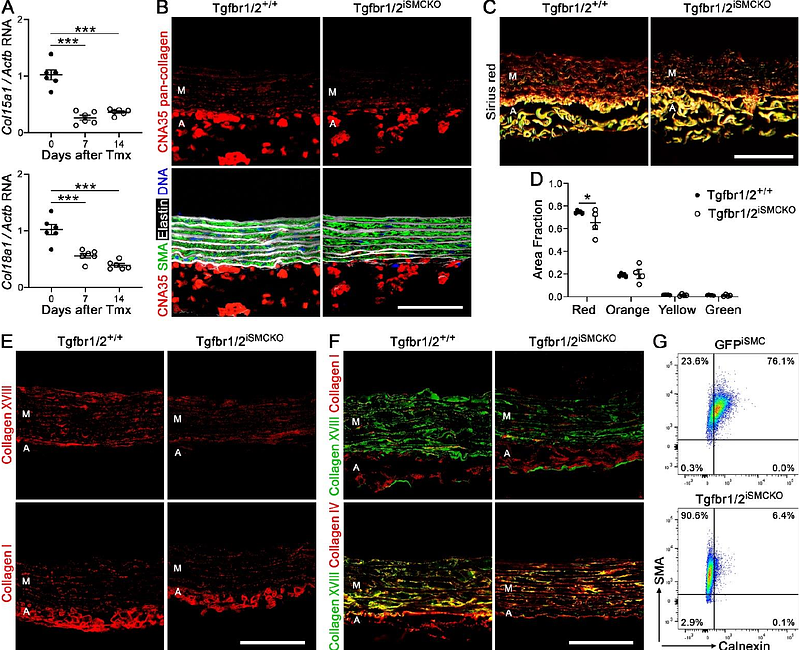Short-Term Disruption of TGFβ Signaling in Adult Mice Renders the Aorta Vulnerable to Hypertension-Induced Dissection

Short-Term Disruption of TGFβ Signaling in Adult Mice Renders the Aorta Vulnerable to Hypertension-Induced Dissection
Jiang, B.; Ren, P.; He, C.; Wang, M.; Murtada, S.-I.; Chen, Y.; Ramachandra, A. B.; Li, G.; Qin, L.; Assi, R.; Schwartz, M. A.; Humphrey, J. D.; Tellides, G.
AbstractHypertension and transient increases in blood pressure from extreme exertion are risk factors for aortic dissection in patients with age-related vascular degeneration or inherited connective tissue disorders. Yet, the common experimental model of angiotensin II-induced aortopathy in mice appears independent of high blood pressure as lesions do not occur in response to an alternative vasoconstrictor, norepinephrine, and are not prevented by co-treatment with a vasodilator, hydralazine. We investigated vasoconstrictor administration to adult mice 1 week after disruption of TGF{beta} signaling in smooth muscle cells. Norepinephrine increased blood pressure and induced aortic dissection by 7 days and even within 30 minutes that was rescued by hydralazine; results were similar with angiotensin II. Changes in regulatory contractile molecule expression were not of pathological significance. Rather, reduced synthesis of extracellular matrix yielded a vulnerable aortic phenotype by decreasing medial collagen, most dynamically type XVIII, and impairing cell-matrix adhesion. We conclude that transient and sustained increases in blood pressure cause dissection in aortas rendered vulnerable by inhibition of TGF{beta}-driven extracellular matrix production by smooth muscle cells. A corollary is that medial fibrosis, a frequent feature of medial degeneration, may afford some protection against aortic dissection.


